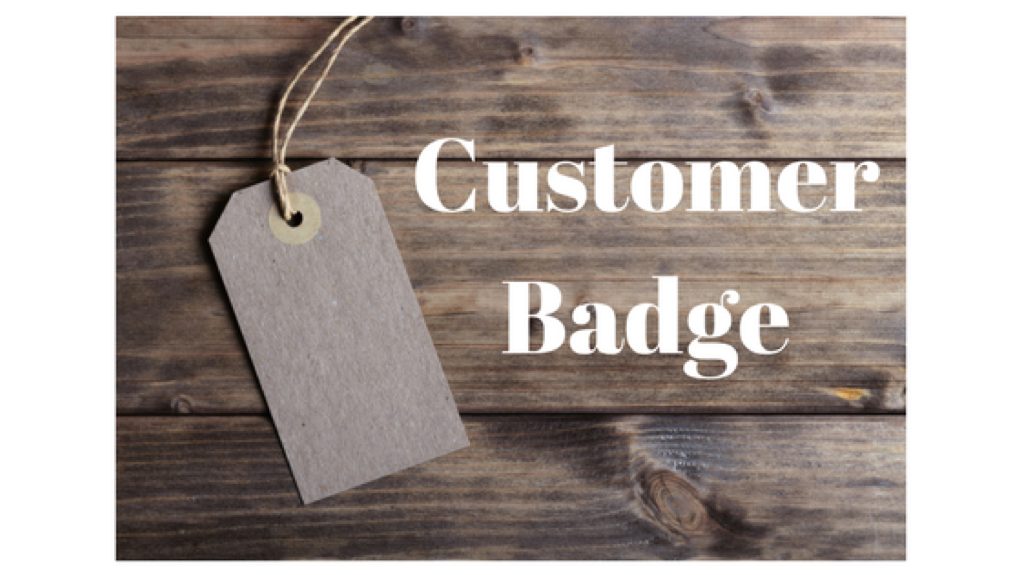Recently, when CEOs were asked what their top business priorities happened to be, a whopping 63 percent said, that by 2020, they were likely to change their business.[1]What’s behind this seismic change?
In today’s increasing disruptive environment, CEOs are grappling with the fact that reliable methods for achieving growth no longer work. Mining existing customers for repeat business, improving workforce productivity, venturing into a new industry vertical—with slight modifications to an existing product—are examples of strategies that for years produced fairly consistent revenue gains…until they didn’t.
Today’s CEOs are beginning to recognize that the world—their world—has changed dramatically. It’s getting harder for their customers and prospects to “Wear [Their] Company’s Brand Badge.” Perhaps you’ve observed that a once loyal customer hasn’t purchased from you in the past two years, or, that competitive pressures forced you to drop your pricing, negatively impacting the bottom line. Maybe prospects in-the-pipeline are taking much longer to commit to purchasing, adding more delays and steps into their decision-making processes, or simply, they aren’t calling you back after the first conversation.
Sound familiar?

Photo Credit: Canva.
If so, you’re not alone in sensing that your scale path has changed and not in a good way. What we’ve found is that our clients’ customers and prospects want companies to “Wear the Customer Badge.” To earn their trust, customers expect companies and brands to understand what they want and how they want to experience it. An excellent example of a company that figured this out is Walmart.
Their focus on getting the customer to “Wear their Brand Badge” centered on getting existing customers to purchase more in their stores and to convert new customers with “Everyday Low Prices.” However, by 2016, Walmart experienced declining profitability for the first time, on top of flat growth posted during the prior two years.
Clearly, something needed to change.
What Walmart figured out is they had over-optimized their focus on the store business and needed to make a pivot to online sales. Their $3.3 billion purchase of Jet.com helped ignite the company’s online business growth by 50% in the quarter the acquisition was completed. In 2017, Walmart purchased 6 more online businesses to create a 70M plus online portfolio of products.
The result is Walmart learned how to give customers what they wanted. Offering – a higher quality of men’s clothing, vintage-styled women’s clothing, and decor, outdoor furniture, and outdoor gear – turned out to be a much more profitable set of offerings than what they could have ever offered in their bricks and mortar stores.

Digitization of Business. Photo Credit: iStock.
Second, they attracted higher-income customers with new products and services, by providing a better online experience that competes with Amazon. Walmart now offers free shipping on orders of $35 or more without requiring customers to join a membership program. Online customers can also pick up their purchases at a local Walmart store. Online customers picking up their purchases are at the local store are shopping at the bricks and mortar store.
What Walmart has learned is the old ways of doing business have stopped working. Sure, they looked for ways to increase the profitability of their bricks and mortar stores by going after a higher-income customer. That proved to be an old question they were asking for years. But the store model stopped working because they were looking at the store model as the answer.
They had underinvested in their online business because they prioritized what they knew – the bricks and mortar store portfolio – and making it more efficient because it was based on their established competitive advantage.
Companies today are not alone in realizing what used to work may no longer. No matter how much Walmart invested in the day-to-day quick fixes, such as messaging, refreshing their stores, and changing the spelling of their names, these steps failed to mitigate the fundamental business model issues that the digitalization of business – the creation of digital products and services – are impacting the tried and true products and services we’ve always delivered.

Business Model. Photo Credit: iStock.
Paradigm shifts cannot be mitigated with a marketing refresh, a new website, or other tactical flourishes. What must be addressed before any of those things is a thorough assessment of your current business model. The results of Walmart’s business model changes are reflected positively on the bottom line.
Changing-whether creating a new stream of revenue, reimagining the business from the ground up, or taking a dramatic approach and blowing it up—the business model is something CEOs realize that they may need to do, to identify new opportunities and scale new revenue streams critical for growth. This requires a different mindset, too, one based on critical thinking and a new focus on customer perceptions of your company and brand. It requires stepping back and asking much deeper questions, including challenging assumptions you may have had for years to figure out a new path to pivot for growth.
[1]Raskino, Mark, “2018 CEO Survey: CIOs Should Guide Business Leaders Towards Deep-Discipline Digital Business,” Gartner, April 6, 2018, Page 1.
Feature Photo Credit: Canva.



You must be logged in to post a comment.